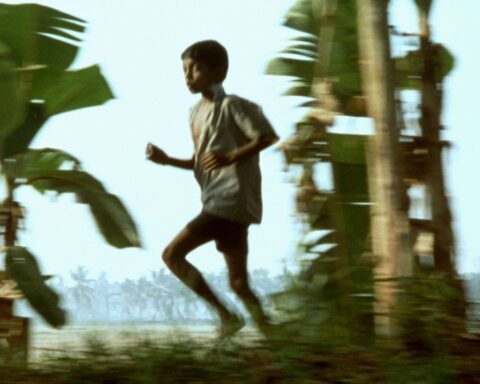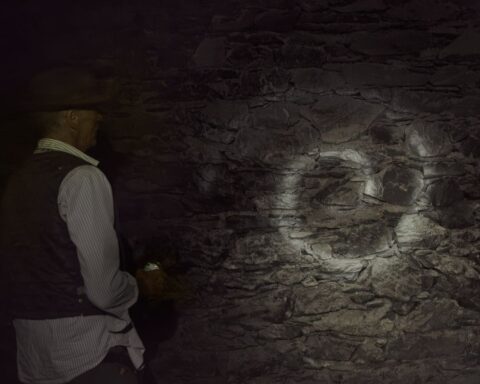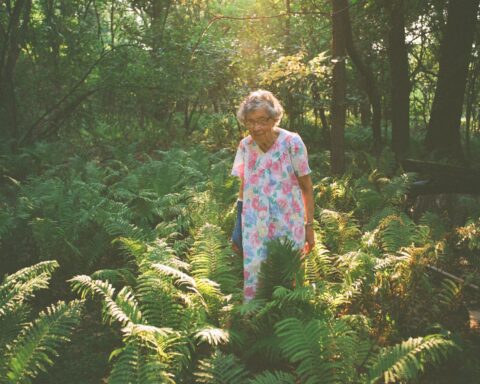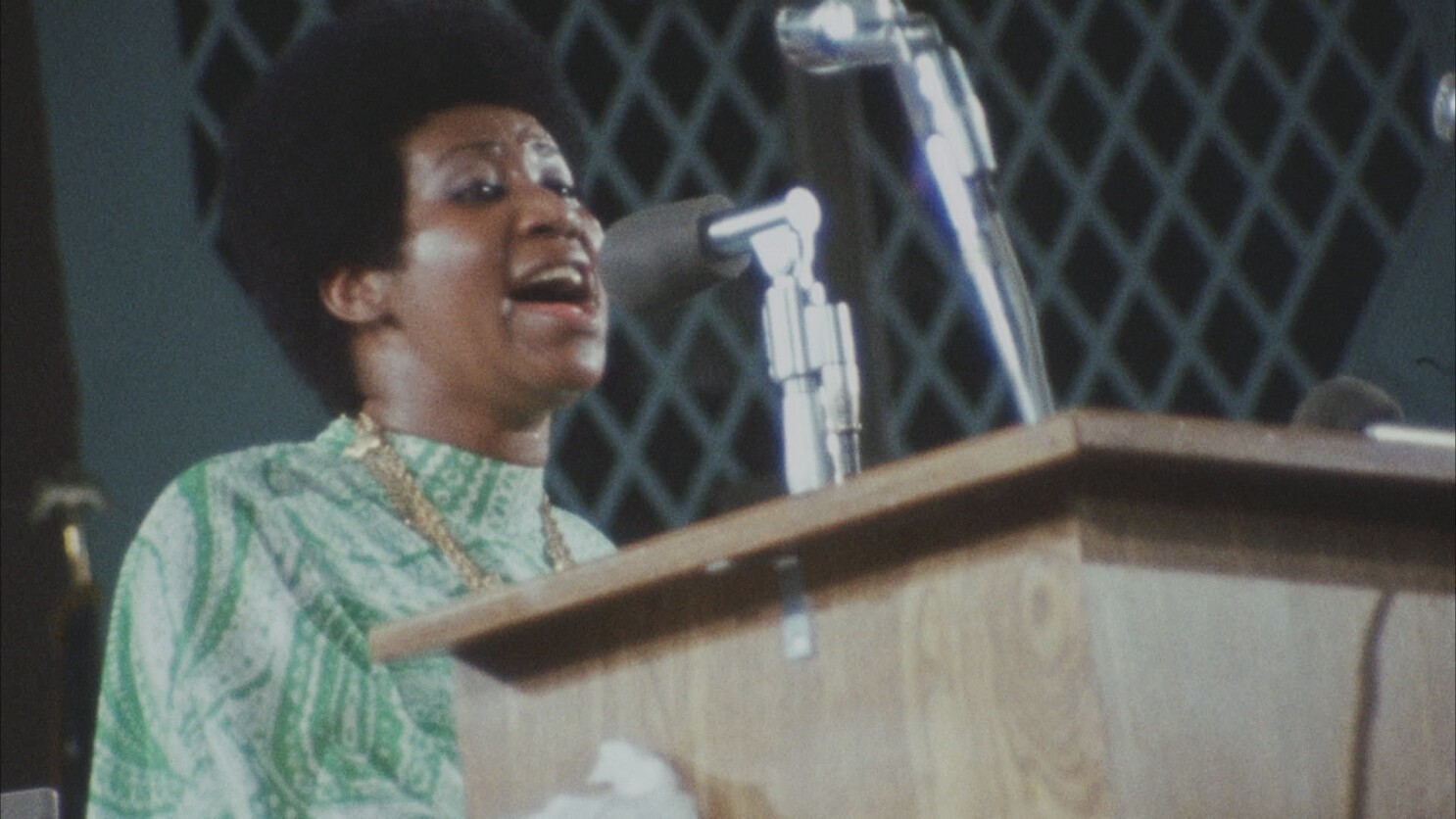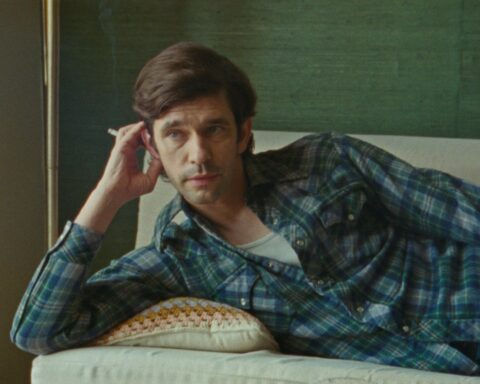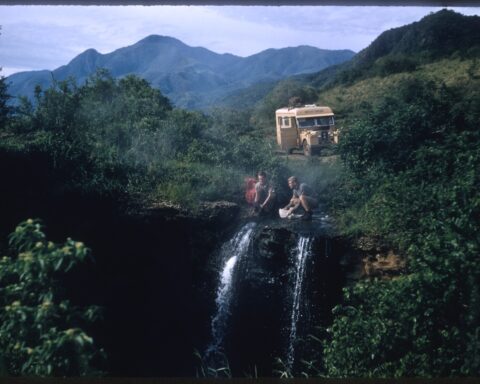Wall
(Canada, 78 min.)
Dir. Cam Christiansen
In 2018, “wall” is a volatile word. Donald Trump’s oft-threatened wall on the USA/Mexico border epitomizes the current White House administration’s deranged, sensationalist, and polarizing attitude towards international relations. There are many good ways to be a good neighbor, but erecting a huge barrier isn’t one of them.
Acclaimed playwright and screenwriter David Hare brings some star power to the NFB as he adapts his play Wall in this animated documentary by director Cam Christiansen. The compelling and provocative Wall sees Hare visit the “security fence” between Israel and Palestine and reflect on the impact that this invasive, intimidating barrier has on people in both lands. The production of Wall predates Trump’s lunacy, but the threat of a new wall affords the film significance and relevance that grows as Hare tours the winding barrier between peace and conflict.
With Wall, Hare lives up to his reputation as one of the great contemporary political dramatists. He is articulate, probing, and insightful as he converses with citizens in both the Israeli and Palestinian territories. His observations are rooted in research and historical precedents, particularly in putting the Israel/Palestine wall in conversation with the Berlin Wall. Hare muses that the current barrier, which aims to keep people out, is like the flip side of the Berlin Wall, which aimed to keep people in. It’s all a question of perspective as governments create garrison-like barriers that rob people of dignity and make citizens prisoners of their own corrupt ideology.
Hare’s narration lets Wall express the very complicated context for the fence with accessible and enlightening oration. His grasp for words, moreover, incorporates the ideological elements inherent in the wall’s construction and existence. Whether one chooses to call the thing a “fence” or a “wall” indicates which side of the debate one is on, so to speak. Israelis rationalize the barrier’s existence as a short-term inconvenience to Palestinians, while Palestinians liken the wall to a tangible manifestation of racial segregation. The film creates an atmosphere rife with tension and division.
The doc doesn’t have a whiff of its theatrical origins as Christiansen’s free-flowing style emphasizes the spatial relations of the wall. The animation provides the most all-encompassing and dynamic encapsulation of the magnitude of the wall that one could find, short of flying a drone around the entire perimeter. Christiansen’s all-encompassing animated eye allows audiences to scale the height, width, and breadth of the wall to appreciate its violently imposing presence. The compelling tour takes in all 708 kilometres of the beast, complete with its snarling barbed wires and threatening guard towers. The imaginative potential allows Hare and the characters, rendered via motion capture technology, to penetrate aspects of the setting that might be too volatile for such a film shoot.
While the animation is spectacular in its realization of the wall, other elements of the visuals look unexpectedly crude. The human subjects, particularly when in motion, resemble unfinished drafts of animated characters with awkwardly rounded joints and limbs. Their movements are jerky, their lips don’t match their words, and their eyes are vacantly blank. Perhaps a mix of realist documentary and animation might have let Wall reach its full potential.
The film never loses its relevance and significance as Hare guides audiences along the bumpy road to peace. Told mostly in grayscale palettes that evoke the aesthetic of graphic novels, Wall takes audiences to a place where distinctions of black and white arise too easily and lead to long term conflicts. The only splashes of colour arise in the graffiti that peppers the barrier in the film’s final act. These markers evoke memories of the Berlin Wall as Hare sees acts of resistance splashed in spray paint. They’re markers of hope—figurative first cracks.
Wall opens in Calgary, Montreal, and Vancouver on August 17. Check the POV blog for updates as it plays additional cities.




